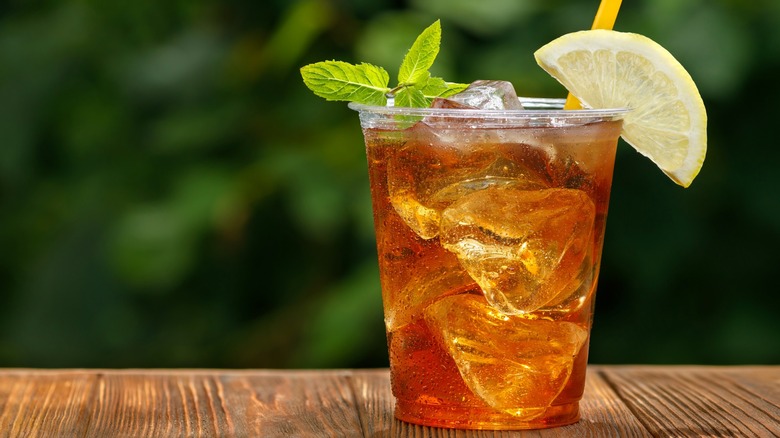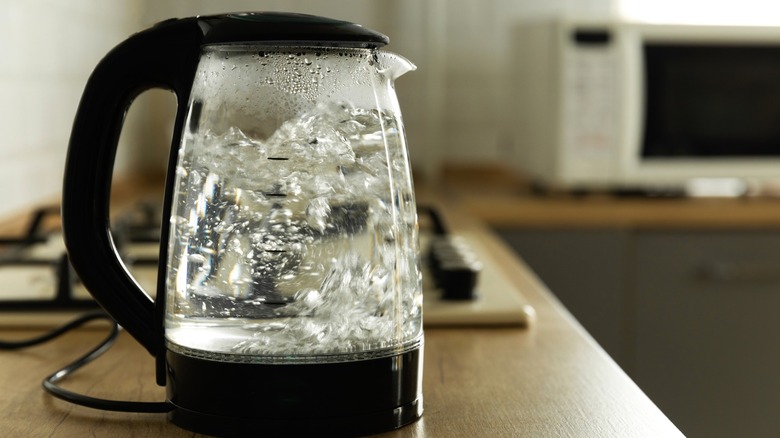The Best Homemade Iced Tea Starts With The Water
We may receive a commission on purchases made from links.
A juicy, flavorful steak begins with sourcing an exceptional cut of meat, and making a refreshing two-ingredient lemon slushie requires real lemon juice. No matter how a food or beverage is prepared, if the ingredients used to make it aren't of good quality, you're fighting an uphill battle to boost the appeal. While iced tea doesn't typically have many components, the same concept applies. A top-notch brand of tea is important, but certified tea sommelier Jee Choe insists the water used to make it deserves equal attention.
Choe's blog, Oh How Civilized, showcases dozens of coffee and tea recipes that folks can make at home. Although iced tea isn't as nuanced a drink as some of the others on her site, she argues the details still matter if you want the best outcome. "I always recommend using filtered water for making any kind of tea, iced or hot," Choe told The Takeout. Whether making an iced tea with a sweet Southern boost or a simple unsweetened drink, "Better water means a better-tasting iced tea," Choe said.
Not only does it make the beverage taste better, but filtered water usually contains fewer contaminants, such as chlorine or even bacteria. Even the most popular bottled water brands are sold in plastic containers and could contain microplastics, so they aren't an adequate substitute for good old filtered H2O. In addition to being intentional about what water she uses to brew tea, for these reasons, "I also use filtered water to make ice," Choe shared.
The ideal water temperature is crucial for iced tea
As simple as iced tea is, there is some nuance involved in making an outstanding version of the beverage, even when filtered water is within reach. Jee Choe noted that the temperature of the water is also a critical factor in obtaining an optimum result. "With homemade iced tea, the process requires making hot tea, then cooling it down," she explained. "I like to use water that's at a gentle simmer, which is between 185 and 200 degrees Fahrenheit, to make iced black tea."
Of course, black tea isn't the only choice people have. Some prefer a more herbaceous green variety, but in that case, the water temperature needs to be adjusted. "If you're making an iced green tea, use even a lower water temperature of 170 degrees Fahrenheit since green tea can quickly get bitter by steeping in water that's too hot," Choe said. With either variety, extra time steeping can also result in a bitter flavor, so for stronger iced tea, just add more tea.
You can achieve the perfect water temperature in two ways. "I use an electric kettle with a temperature setting, but if you're boiling water on the stovetop, the water is at a gentle simmer when you see small bubbles in the water," Choe said. This Seehot Electric Kettle comes equipped with a thermometer so you can take the guesswork out of achieving an ideal temperature. However, if you need to estimate, pay close attention so it doesn't get too hot. "Water that's too hot or at a rolling boil will affect the flavor by making the tea too bitter," Choe cautioned.

